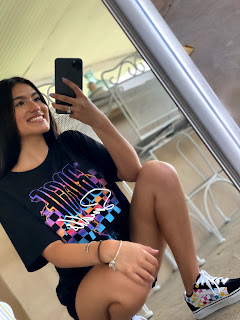Before I begin my photoshoot(s), I want to research the different aspects that compose mise-en-scene. My research will help me put together the scene of my photoshoot.
For starters, mise-en-scene consists of everything that is captured in a shot. The different components all contribute in creating the aesthetic of the shot. The main characteristics are the setting, decorations, costume and/or makeup, lighting, and expressions.
Setting
The setting is the place in which the photograph or film takes place. It can be a natural location or inside of a studio. The setting is important because it usually helps the audience have a better perception of what is occurring. The picture below is one of a natural scene. If this were the background of a photoshoot or a film, the audience would make some associations between the plot and the character. Sometimes settings are used for their aesthetic, while other times they have a larger significance.
Costume and/or makeup
The costume consists of the model's attire, accessories, and makeup if they are wearing any. Many times jewelry is an attention-grabbing accessory in many magazine covers, while others are more simple. Models sometimes do not wear jewelry at all, so their costume is their clothing and shoes. The picture below is very minimalistic and simple. The accessories are two silver bracelets and a ring. The makeup look is also very minimal, as there is no flashy eyeshadow color standing out.
Sources
https://www.dartmouth.edu/~film01/mise.html
https://www.lightsfilmschool.com/blog/mise-en-scene-in-film-afk





Comments
Post a Comment